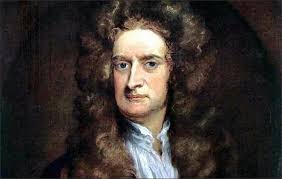Sir,-I wrote a pretty while ago to you about the
Hockesdon earth, which, because I fear it miscarried, I
now repeat, desiring your opinion of it.
Not far from Moorfields, near the new square in
Hockesdon, some workmen digging a cellar for a new
house in the end of a garden, when they were about
three feet below the surface of the ground, found a very
strong smell in the one half thereof. Passing that way,
and finding it very surprising, and a thing that I had
neither heard of nor seen before, I thought it worth
farther enquiry.
The workmen having dug a pit about six feet deep,
at about three yards’ distance from that end of the cellar
which smelt so strong, I there found three several layers
of earth one over another, all of them, more or less,
having the same scent. The uppermost stratum was
clay, or, as the workmen call it, loom. It did not smell
till three feet deep, but then was very strong, and some-
thing noisome. If one look earnestly on some pieces of
this clay, there are easily discernible several small quan-
tities of a bituminous substance, brownish colour, and
tough consistence. I doubt not but this substance gives
the smell and other qualities to this layer. This clay
preserves its scent a pretty while, though by degrees it
grows fainter; and being exposed to the air for about a
month, will lose it quite. Eight pounds of this clay dis-
tilled in a retort, placed in a sand-fire (third degree of
heat), yielded one pound of phlegmatic liquor, and six
drachms of oil, of a quite different smell from anything I
have hitherto met with.
The second layer was gravel, which reached from three
and a half to about four and a half deep, or thereabouts.
It very much resembles the other in all its qualities, ex-
cept the noisomeness of its smell. It loses its scent much
sooner than the former.
The third layer was an earthy sand, which smells
stronger than the other two, and withal is much more
fragrant. The deeper you dig it smells the stronger. I
took eight pounds of this layer, at nine feet deep, and
filled a retort with it, and placed it as the clay; but it
afforded only six ounces of phlegmatic liquor, and two
drachms of oil. This sandy loose earth quits its scent in
about a fortnight, being exposed to the summer air.
Considering that waters owe their greatest differences
to the several soils through which they pass, I was very
desirous to see what sort of waters would be produced
by their being percolated through such a strainer as this
strange sort of earth; and desiring the owner to dig till
he should find water, he accordingly did; and when he
came to about eighteen feet deep, water came in very
plentifully, conditioned as follows: –
It had at top a curiously coloured film, the colours of
it resembling those of the rainbow. Under this was a
whitish-coloured water, which, upon standing in a phial
some days, lets fall a brownish sediment, and by that
means becomes diaphanous. It smelt very strong, as the
earth did; was somewhat bitter and clammy, as one may
see by putting his hands in it, and suffering them to dry
without wiping. If you put some powdered galls into a
glass of this water, so soon, or a little after, you take it
out of the well, it will turn of a purplish red; but if it
stand a day or two, it will not at all.
Several persons having drunk of this well, about three
pints, say that usually it works about three times by
stool, and very much by urine.
From which I conclude it to be a natural bitumen,
perhaps
sui generis, that impregnates both water and
earth. I desire your opinion on it, and remain, &c.
London, November 10, 1685.

